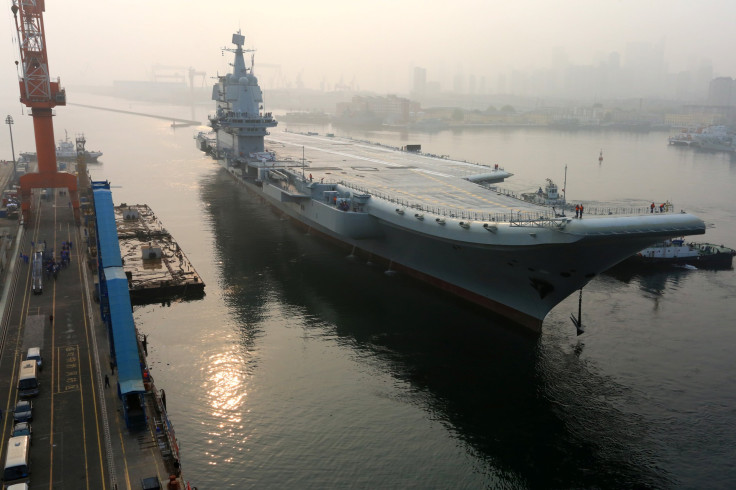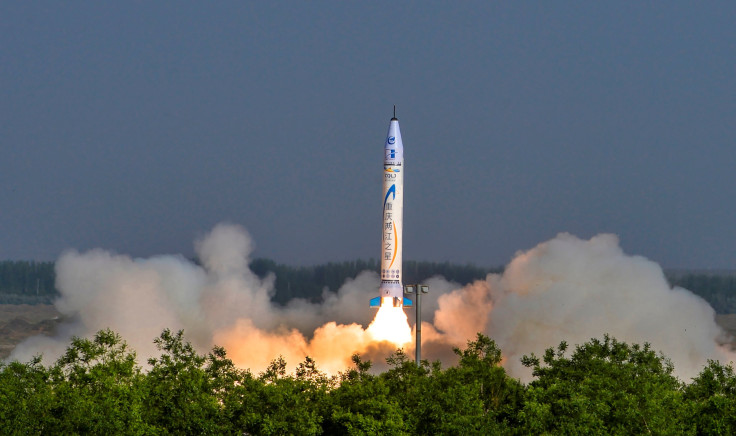China Tests First Domestic Aircraft Carrier, Launches Maiden Privately-Built Rocket

President Donald Trump has accused China of stealing U.S. technology, and used that as the reason to impose tariffs of up to $150 billion on the Asian powerhouse, but that doesn’t mean the world’s second-largest economy isn’t developing its own. As a sign of its growing military might, China tested its first domestically built aircraft carrier, with the five-day sea trial ending Friday.
The ship, which still hasn’t been named, was launched in April 2017, and is the second carrier in the Chinese navy. During the tests that began May 13, the 50,000-ton vessel completed all its assigned tasks, according to reports. It is scheduled to be commissioned before 2020, once its air fleet arrives.
The existing aircraft carrier, Liaoning, was commissioned in 2012. It was bought from Ukraine and majorly overhauled in China, and now has a fleet of Chinese j-15 fighter jets. The design of the new carrier, like Liaoning, is based on the Soviet Kuznetsov class of aircraft carriers. They feature a ski-jump style takeoff deck and are powered by an oil-fueled steam turbine.
After completing its first sea trial, the new carrier returned to its dock in the construction yard in Dalian, a port city in northeast China’s Liaoning Province.
But it is not just its navy that China is strengthening, which already has the largest number of vessels for any navy in the world. The country has already been manufacturing its own fighter jets, and is an increasingly important player in the global space race.
On Thursday morning, a rocket launch from northwest China marked the first time the country flew a rocket built by a private company, OneSpace Technology. The Beijing-based company was set up in 2015, a year after China announced new rules allowing private companies in the commercial aerospace sector.
Sometimes called China’s SpaceX, OneSpace launched a nine-meter rocket called Chongqing Liangjiang Star. It weighed 7,200 kilograms and reached a maximum altitude of 38.742 kilometers, flying at a top speed of more than 5.7 times the speed of sound, according to Shu Chang, founder and CEO of OneSpace, according to Chinese state-run media Xinhua. The rocket is powered by a solid fuel engine and can fly for up to 5 minutes, or about 273 kilometers. Eventually, it would be able to carry a 100-kilogram payload into an orbit 800 kilometers above Earth.

For now, OneSpace wants to focus on launching small satellite for clients across the world. And for all the comparisons with SpaceX, it still cannot land and reuse the rockets it launches. However, China is working on that too.
It is developing the Long March 8 rocket, expected to be ready for its debut flight around 2021, and according to senior designers involved in the development, China will try to recover the rocket’s first stage and boosters through vertical landing. By 2035, the country hopes to have completely reusable rockets.
China has ambitious plans for space exploration, including setting up its own space station in low-Earth orbit within the next decade.
© Copyright IBTimes 2024. All rights reserved.





















